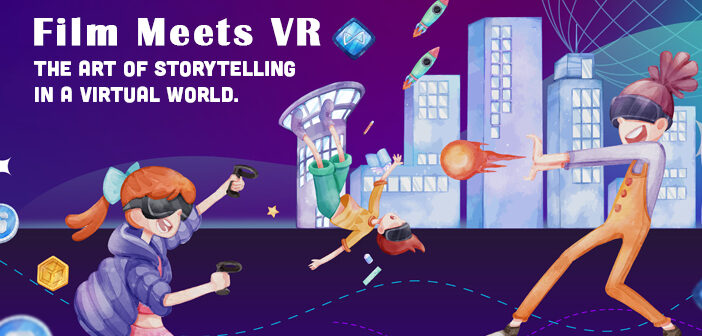Virtual Reality (VR) has become a dominant force in every other industry, and the Entertainment industry is no exception. In the business world, films are one of the highest-earning businesses and also it is the industry that updates at lightning speed.
And now, VR is changing the film industry significantly, and there are several benefits of using it in the film industry, especially for storytelling.
Immersive Storytelling
VR enables filmmakers to create unique storytelling experiences with its ability to make people completely immersed in the new world. It is transforming the way people think about films and storytelling, taking it to a whole new level. From a two-dimensional world to creating a completely immersive experience for users, VR has already come a long way.
It’s not exaggerating if we tell you VR can directly make viewers travel into the story and make them forget the real world! Dominating the traditional way of filmmaking in an unimaginable way, VR is helping filmmakers to create interactive stories, allowing viewers to explore their environment in a new way.
VR & Emotional Connection
A film that connects with its audience is a grand success, and VR can do it perfectly! It has the ability to create empathy that the traditional way of filmmaking lacks. In a VR environment, instead of watching the film passively, the audience will become part of it, which then creates an emotional connection.
Taking into the different world, VR allows viewers to emotionally connect with the characters and themes of the film and make them feel they are in the real and different world. Also, there are a few films like ‘A Quiet Place’, which used VR in a way which made the audience be in the world of film, providing a more intense experience.
Sense of Presence
VR also creates a sense of presence in the audience by making them deeply in the story. They forget they are watching the film and feel as if they are a character in it. This real and immediate experience is what differentiates VR from the traditional method.
Using VR, the feeling of ‘being there’ is created with the help of appealing visuals and audio. With this advancement in technology, audiences take the role of the character in the film instead of being an observer.
Complex but Easy
The filmmakers can create complex stories easily with VR by exploring the virtual environment from different angles and perspectives. VR helps create amazing visuals that explains the difficult story in a simple way.
VR enables filmmakers to explore and experiment with the story in unique ways which was not possible in the past. Using 3D and other motion tools, makers can plan different plots that connect with the audience and can choose the best. With VR, the whole filmmaking process becomes easier, faster, and cost-effective.
Crafting Compelling Stories
Drawing the attention of viewers and engaging them are the two essential tasks that filmmakers have to focus on, and this can be achieved through VR. By creating a great virtual world and giving the context to make viewers easily understand the characters and the whole VR world, the two tasks can be fulfilled.
Identifying key elements such as narrative, characters, pacing, and other elements creates interesting stories and they can be made more appealing using VR.
Top-notch Production Values
VR has a wide range of tools and techniques that increase the production values of a film. For instance, It allows producers to use Green Screen technology which makes creating visual effects easy. Also, post-production tools such as 360-degree video editing software will be of great help to improve the overall quality of the film.
With 360-degree software, cinematographers can place their cameras in the middle of the scene which helps filmmakers to view it from different angles. Also, more detailed virtual sets can be made which reduces the costs and efforts of making the physical sets.
Cons of VR in the Film Industry
Though there are many benefits of VR in the film world, it doesn’t come without any challenges. Filmmaking with VR requires a different kind of skill set that not many people have. Filmmakers must learn to create engaging VR worlds, interactive environments, and great stories.
Another problem with VR is that it is in the initial stage in the film industry and so there are no fixed standards and guidelines, making it hard for the filmmakers to create compelling stories that can fully use the potential of VR.
Conclusion
VR is transforming storytelling in the film industry but with some limitations. However, these challenges can be easily ignored for its numerous benefits. From providing immersive experiences and enhancing production values to reducing costs, VR has already brought a revolution in the film industry and will continue to do so.



